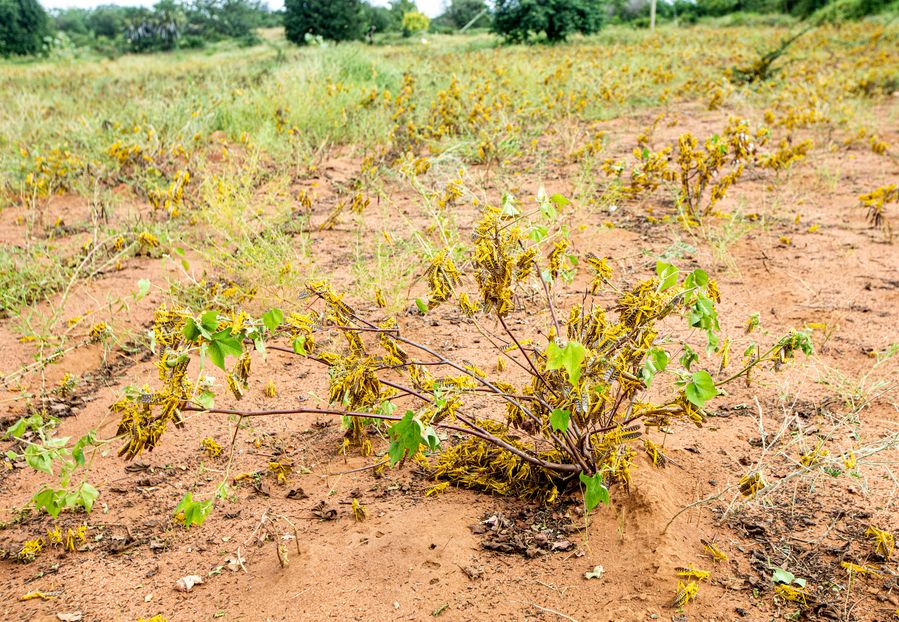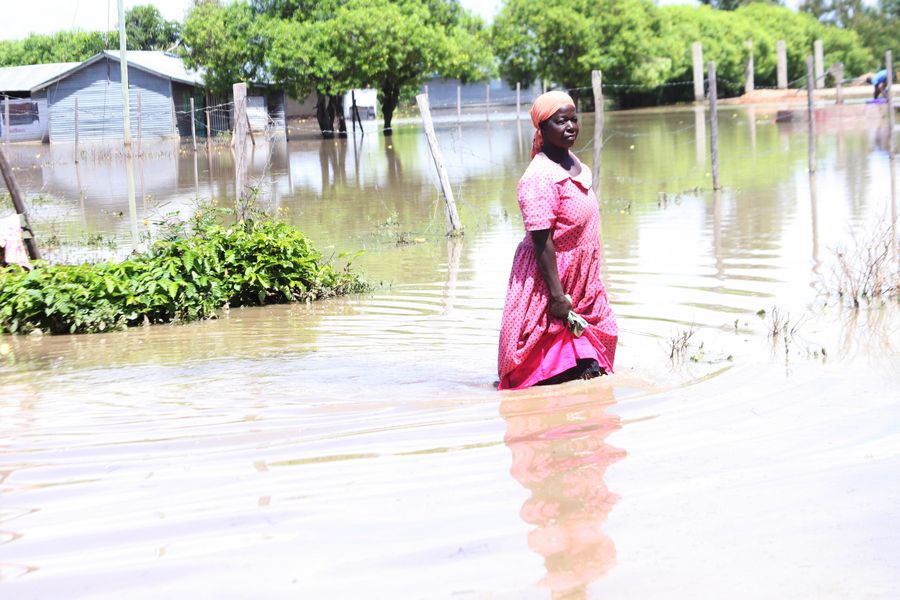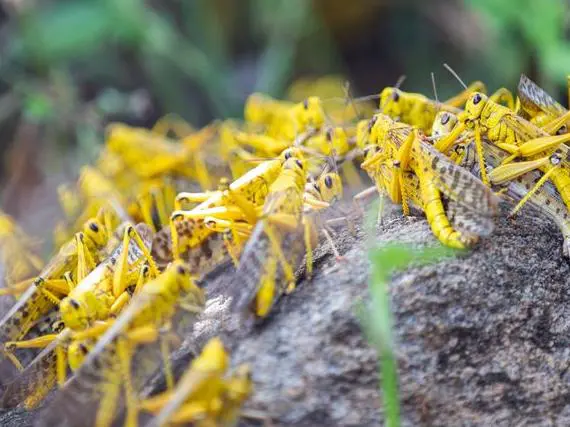A swarm of desert locusts invade parts of Mwingi Town in Kitui County, Kenya, Feb. 20, 2020. (Xinhua/Zhang Yu)
Unexpected heavy rains in different parts of Kenya present fresh challenges to farmers battling the invasion of desert locusts, which have spread to at least 20 of the 47 counties in the east African nation.
NAIROBI, March 5 (Xinhua) -- Unexpected heavy rains in different parts of Kenya present fresh challenges to farmers battling invasion of desert locusts, which have spread to at least 20 of the 47 counties in the east African nation.
The country is currently experiencing heavy rains that the meteorological department has warned would continue for the next two months.
Areas that are receiving heavy rains, according to the meteorological director Stella Aura, are western, the coast, northeastern, central and southern regions.
The rains usher in a little earlier Kenya's annual long rains season that normally starts from mid-March to May.
"The long rains season begins early over most parts of the country. The forecast for March-April-May indicates that much of the country, especially most of the western and southern sectors, are likely to experience generally enhanced rainfall," said Aura in the latest weather forecast seen on Tuesday.
While most farmers have been caught unaware because they are yet to complete preparing farms for the first planting season, a majority are a lot worried.
The heavy rains are expected to trigger growth of vegetation, which would support the development and production of more desert locusts, worsening the current crisis.
Kenyan farmers may thus experience a fresh round of locust attack on their crops in the coming months as the eggs hatch and the hatchlings find new vegetation to devour.

A swarm of desert locusts invade parts of Mwingi Town in Kitui County, Kenya, Feb. 20, 2020. (Xinhua/Zhang Yu)
According to United Nation's Food and Agriculture Organization (FAO), locust eggs require moist soil conditions, absorbing moisture to complete their development.
"When plentiful rainfalls and annual green vegetation develops, desert locusts can increase rapidly in number and within a month or two, start to concentrate and become gregarious," notes FAO in a bulletin on the insects.
It added that most adults start to mature when they arrive in an area that received significant rains recently, with the hardening of the soft wings of the locust stimulated by rainfall.
FAO in its Locust Watch update for March 2 observes that in the past weeks, there has been widespread locust swarm breeding happening in central and northern counties in Kenya, leading to a new generation of the insects.
"This represents an unprecedented threat to food security and livelihoods at the beginning of the upcoming cropping season," says FAO.
The rains and the impact it would have on the locusts is what is worrying farmers and agriculture experts, especially in counties that have already infestations as the voracious insects may return.

A woman wades through the flood water after a heavy downpour in Nyando, Kisumu County, Kenya, Feb. 2, 2020. (Xinhua/Fred Mutune)
Beatrice Ngari, a farmer in Embu, central Kenya, whose cowpeas, beans and green grams were ravaged by two locust invasions in January and February, noted that with the ongoing rains, the insects may return and finish what is left on the farms.
"I welcome the rains but I am worried as a farmer in an arid area. They will hatch in the high rainfall areas and migrate to dry regions like this one to thrive and destroy crops," she said. Her sentiments capturing fears of thousands of Kenyan farmers.
The locusts have also invaded the neighboring Nyeri, Isiolo, Meru and Laikipia counties twice, with farmers losing cash crops like coffee, khat and tea to the insects.
Beatrice Macharia, an agronomist with Growth Point, an agro-consultancy in Kajiado County, noted that if the rains would be too heavy causing floods, the water may wash away locust egg.
"But that is not a guarantee that the insects would not invade crops because swarms may come from even neighboring countries and thrive on the fresh vegetation," Macharia said.
 简体中文
简体中文

